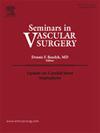Potential applications of artificial intelligence (AI) and machine learning (ML) on diagnosis, treatment, outcome prediction to address health care disparities of chronic limb-threatening ischemia (CLTI)
IF 3.3
3区 医学
Q1 PERIPHERAL VASCULAR DISEASE
引用次数: 5
Abstract
Chronic limb-threatening ischemia (CLTI) is the most advanced form of peripheral artery disease. CLTI has an extremely poor prognosis and is associated with considerable risk of major amputation, cardiac morbidity, mortality, and poor quality of life. Early diagnosis and targeted treatment of CLTI is critical for improving patient's prognosis. However, this objective has proven elusive, time-consuming, and challenging due to existing health care disparities among patients. In this article, we reviewed how artificial intelligence (AI) and machine learning (ML) can be helpful to accurately diagnose, improve outcome prediction, and identify disparities in the treatment of CLTI. We demonstrate the importance of AI/ML approaches for management of these patients and how available data could be used for computer-guided interventions. Although AI/ML applications to mitigate health care disparities in CLTI are in their infancy, we also highlighted specific AI/ML methods that show potential for addressing health care disparities in CLTI.人工智能(AI)和机器学习(ML)在慢性肢体威胁缺血(CLTI)诊断、治疗和预后预测方面的潜在应用
本文章由计算机程序翻译,如有差异,请以英文原文为准。
求助全文
约1分钟内获得全文
求助全文
来源期刊
CiteScore
3.50
自引率
4.00%
发文量
54
审稿时长
50 days
期刊介绍:
Each issue of Seminars in Vascular Surgery examines the latest thinking on a particular clinical problem and features new diagnostic and operative techniques. The journal allows practitioners to expand their capabilities and to keep pace with the most rapidly evolving areas of surgery.

 求助内容:
求助内容: 应助结果提醒方式:
应助结果提醒方式:


